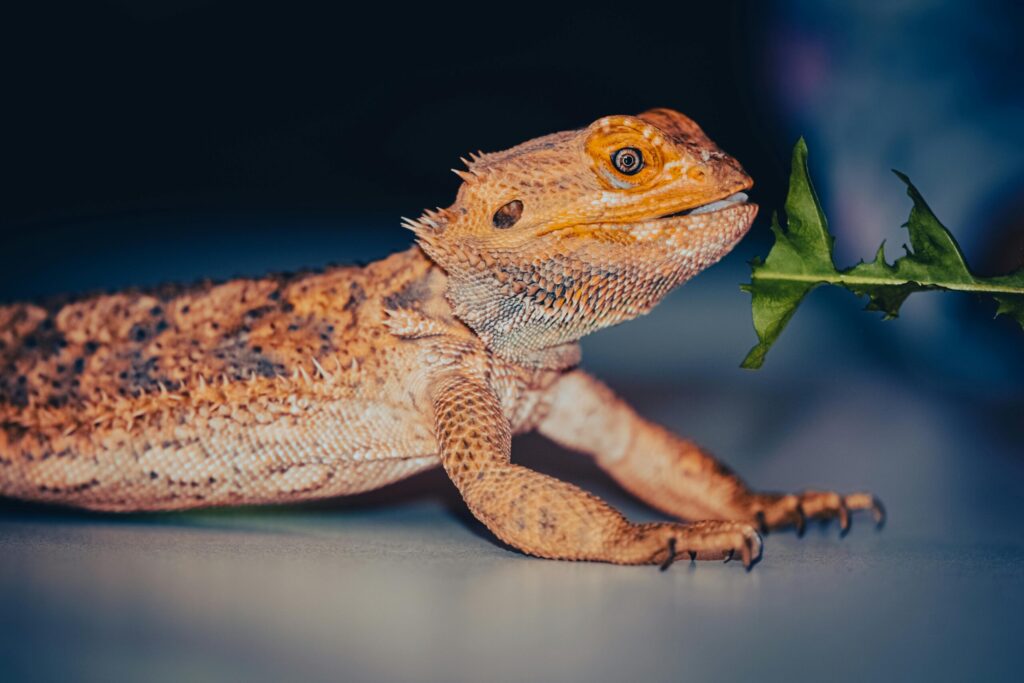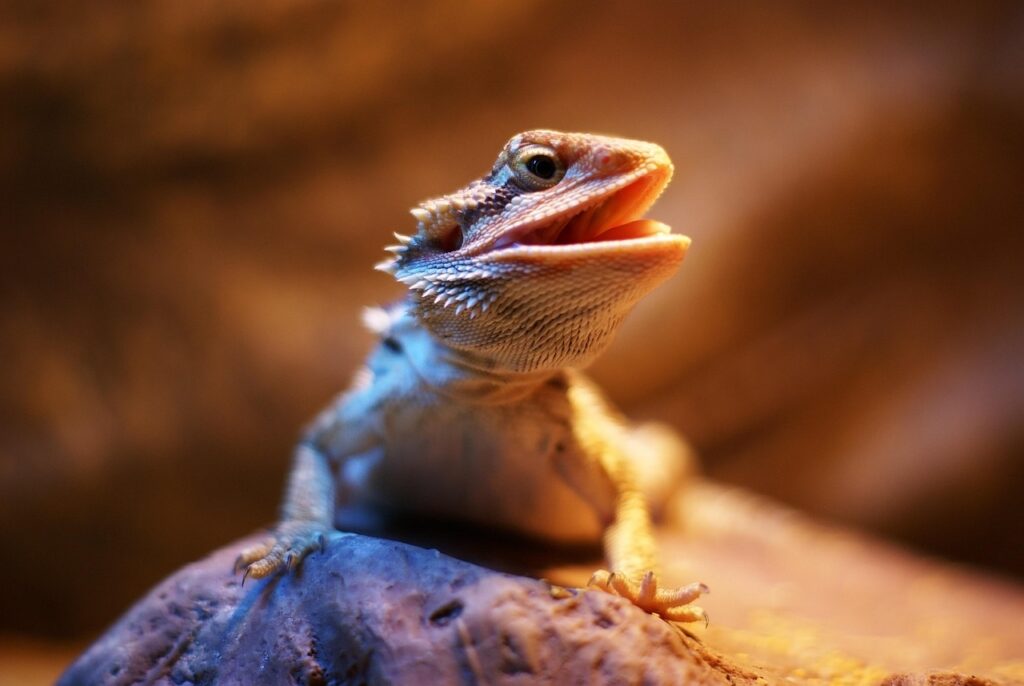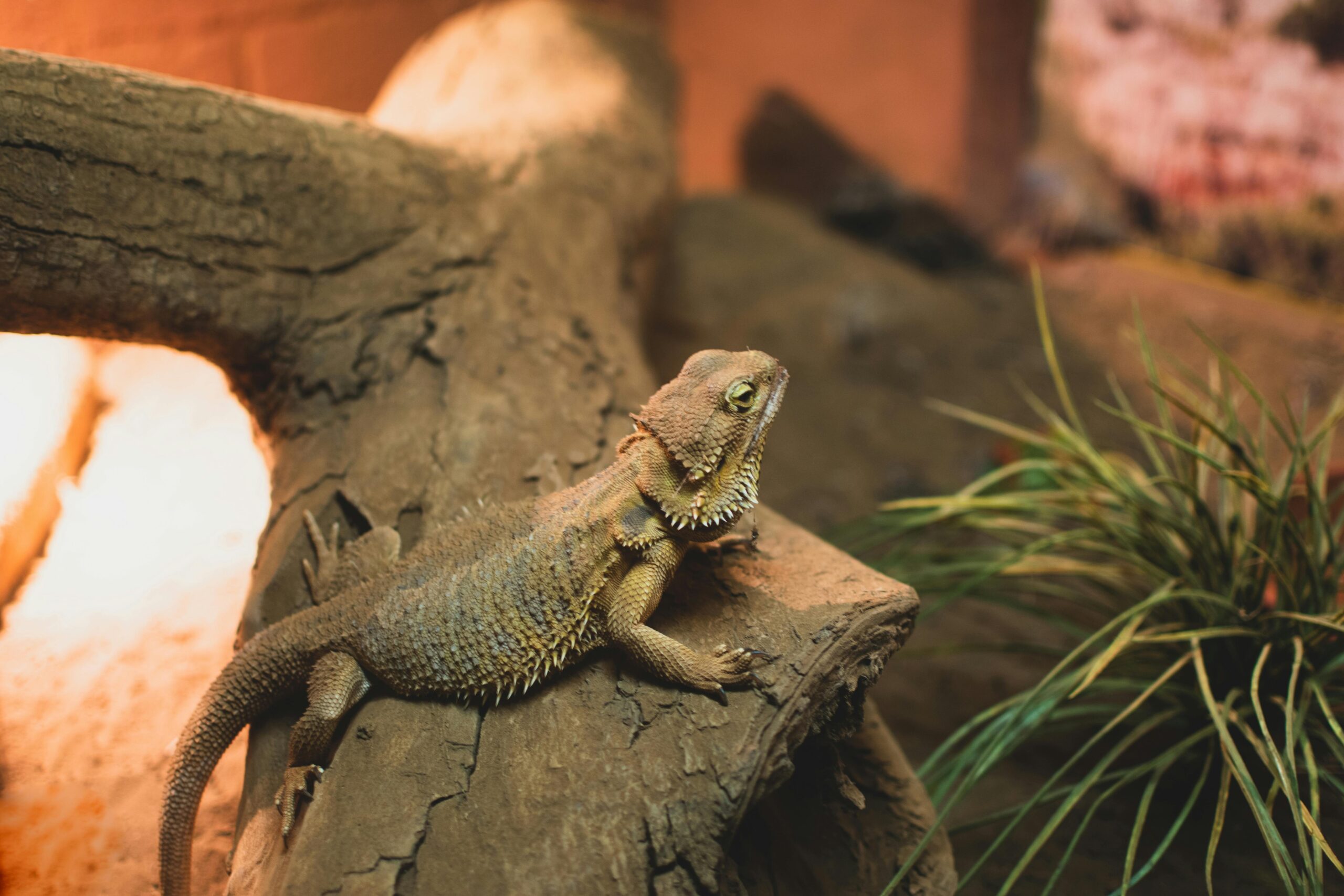Summary
Hello and welcome to the Optimal Exotics Bearded Dragon Care Sheet. Bearded Dragons, also known as Pogona vitticeps, are popular pet lizards commonly sourced for their docile nature and distinctive appearance. Native to eastern and central Australia, they inhabit diverse environments such as deserts, scrublands, and dry forests. With proper care, bearded dragons can live an average of 10-15 years in captivity, with some reaching up to 20 years.

Housing Requirements:
A single adult bearded dragon requires a spacious enclosure measuring at least 6 feet long, 2 feet wide, and 2 feet high. Front-opening enclosures with mesh tops are recommended for optimal ventilation and accessibility. Bearded dragons are territorial and should be housed individually to prevent aggression and potential injuries.

Lighting and UVB:
Bearded dragons are diurnal reptiles that need proper lighting to thrive. A 34-inch T5 HO Arcadia 12% or Zoo Med Reptisun 10.0 UVB bulb, positioned on the warm side of the enclosure, is suitable. The basking area should be placed 11-13 inches below the UVB lamp if mounted over mesh, or 16-19 inches below if mounted inside the enclosure. Additionally, full-spectrum lighting with a color temperature around 6500K is beneficial for their mental health, promoting alertness and natural behaviors.
Temperature and Heating:
Maintaining appropriate temperatures within the enclosure is crucial:
- Basking surface temperature: 105-115°F (40-46°C)
- Cool zone temperature: 70-85°F (21-29°C)
A cluster of two 90-100w halogen flood bulbs can effectively achieve these basking temperatures in a 24-inch tall enclosure, ensuring the dragon’s entire body is adequately warmed.
Substrate:
If you are an experienced keeper, using 4-6 square feet of clean reptile-safe sand as a substrate is recommended. This provides a naturalistic environment and allows for burrowing behaviors. Ensure the sand is kept clean and dry to prevent bacterial growth and potential health issues. However, if you are new to keeping bearded dragons, or in the case that your pet is sick or injured, you will want to consider a safer option that is easier to clean such as tile, news paper or paper towels to prevent impaction. Impaction is a rare but potential health condition that generally occurs in bearded dragons when they consume something that is not digestible such as sand or substrate.

Dietary Requirements:
Bearded dragons are omnivores, requiring a balanced diet of insects and plant matter. Young dragons need more live food than adults, so provide about 65% live food and 35% greens, increasing the amount of greens as they grow. Baby dragons should be fed twice daily, with the greens chopped up small. Juveniles and adults should be fed once daily. Older bearded dragons (larger than 30cm) need about 40% live food and 60% greens. Feed in the morning so that the dragon can digest its food during the day.
As a general rule of thumb the following feeding schedule applies for bearded dragons:
- Hatchlings (0-6 months old): Insects 2x/day, vegetables daily
- Juveniles (6-12 months old): Insects 1x/day, vegetables daily
- Adults (>12 months old): Insects 2-3x/week, vegetables daily

Common Health Issues and Prevention:
Bearded dragons are generally hardy but can be susceptible to certain health problems:
- Metabolic Bone Disease (MBD): Caused by a lack of calcium, vitamin D3, and/or phosphorus, leading to weakened bones. Symptoms include bumps in the legs, twitches, and a swollen jaw. Prevention includes proper diet, correct UV light, and temperature.
- Respiratory Infections: Often resulting from low temperatures, high humidity, or unsanitary conditions. Signs include gaping mouth, breathing difficulties, and excess mucus around the mouth and nostrils. Maintaining appropriate temperatures and humidity levels, along with regular cleaning, can help prevent these infections.
- Impaction: Occurs when the digestive tract becomes blocked, often due to ingestion of inappropriate substrates or large prey items. Symptoms include lack of appetite and lethargy. Prevent by using suitable substrates and feeding appropriately sized prey.
- Infectious Stomatitis (Mouth Rot): Characterized by a yellowish/white substance in and around the mouth, swelling, and loose teeth. Affected dragons may have a decreased appetite. Immediate veterinary attention is necessary for treatment.
- Parasites: Both internal and external parasites can affect bearded dragons, leading to weight loss and other health issues. Regular veterinary check-ups and maintaining a clean enclosure are essential preventive measures.
Cleaning and Maintenance
Spot-clean the enclosure daily, removing soiled material and discarded food. Water and food bowls should be washed daily to prevent bacterial growth. A thorough cleaning and disinfection of the habitat should be performed at least once a week, or more frequently if multiple dragons are housed together.
By adhering to these guidelines, you can provide a healthy and enriching environment for your bearded dragon, ensuring their well-being and longevity.
Sources:
- Bearded Dragon (Pogona Vitticeps), reptifiles.com/wp-content/uploads/2023/09/Bearded-Dragon-Care-Sheet-ReptiFiles.pdf. Accessed 21 Mar. 2025.
- “Bearded Dragons – Diseases: VCA Animal Hospitals.” Vca, vcahospitals.com/know-your-pet/bearded-dragons-diseases#:~:text=Common%20health%20conditions%20of%20pet,dragons%20are%20reasonably%20hardy%20animals.%22. Accessed 21 Mar 2025.


